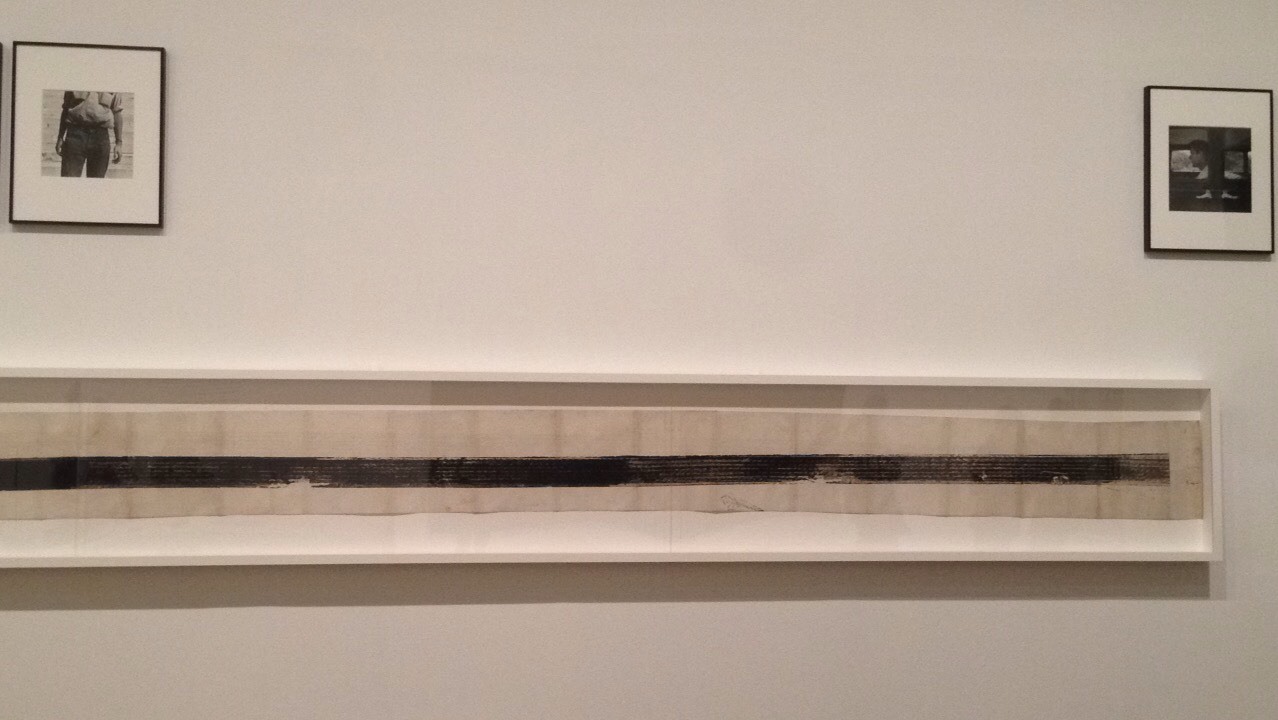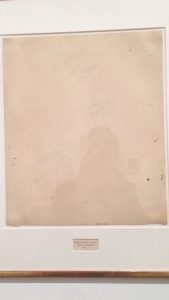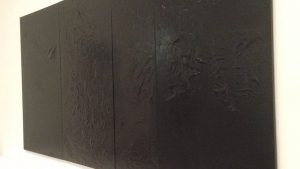A car just passed and left a black mark on the ground. Following the line on the wall, the viewer starts his journey into Robert Rauschenberg’s art. Diving into the life-experience of an out of the ordinary, playful, unexpected artist. The black ink tire print welcomes your mind, plumbing it in an unconventional world where sculptures, paintings and industrials materials blend, and boundaries no longer exist.
In 1944, the young Milton Robert Rauschenberg embarked on his journey that took him miles away from the oil company town in Texas where he grew up. After traveling to Paris, he returned to the States and enrolled in the Black Mountain College, where he became the pupil of Joseph Albers, John Cage, and Merce Cunningham. Those teachers plunged him into creating using everyday materials, music, textiles, dances, and much more.
The retrospective exhibit, now at Tate Modern London, throws you right into Rauschenberg’s art journey from the end of the Black Mountain College to his life in New York with Susan Weil. (Fig.1 [below] Robert Rauschenberg, Automobile Tire Print, 1953, paint on 20 sheets of paper mounted on fabric, San Francisco Museum of Modern Art, purchase through a gift of by Phyllis C.Wattis)
Figure 1: Robert Rauschenberg, Automobile Tire Print, 1953
The exhibitions starts with a black ink print of an automobile tire on 20 sheets of typewriter paper. The ink still seems fresh. Somehow you can still feel the noise of the car, as if the car was just around the corner waiting for you. It is a normal tire, made of rubber and petroleum, those very oil refined products he grew up with. This was the first step into Rauschenberg’s artistic statement: “I can make art from anything, the world was my canvas.”
Related article: ‘A POEM BY ADAM CLAY’
On the other side, you face a dirty white page, mounted on a gold frame. This comes from one of Rauschenberg’s most famous performances that lasted for more than a month. “The whole idea, just came from my wanting to know whether a drawing could be made out of erasing,” said Rauschenberg, when he asked to the abstract expressionist Willem de Kooning for a drawing to erase. It took Rauschenberg a month, and about forty erasers, to complete the job. It was then exhibited in 1955, where Jasper Johns, Rauschenberg’s partner at the time, placed it in a gold frame with a typed inscription.
 Those extraordinary pieces introduce us to Rauscheberg’s universe in his early years in New York. At the time, he worked with materials that he could find easily and blend. For example, he created a series of “Elemental Sculptures” using materials that he scavenged from his neighborhood.
Those extraordinary pieces introduce us to Rauscheberg’s universe in his early years in New York. At the time, he worked with materials that he could find easily and blend. For example, he created a series of “Elemental Sculptures” using materials that he scavenged from his neighborhood.
From those first pieces, where he conceptually approaches materials, the viewer is suddenly plunged into the re-appropriation of those very external elements. I am hereby referring in particular to the ballet settings which he was in charge of creating as palcoscenico for John Cage and Merce Cunningham ‘Minutiae’, or the red multi-material red painting Charlene. Not to forget, the electric lamp lighting the red colored surface where an umbrella, and other lost and found objects are combined.
Figure 4: Robert Rauschenberg, Winter Pool
The white lamp on the dark red gives a rhythm to the viewer’s eyes. It plunges the public into an unexpected new interpretation of the cubist collages, a way of creating and combining objects that you would never usually link. The most spectacular combinations then come along.
‘Winter pool’, a wooden ladder welcomes the viewer to climb between colorful canvases. An escalation towards a new unknown creativity that the viewer will discover, and as a good movie, I will stop the report of my journey in order to leave each reader to inspire and discover Rauschenberg’s world in his own way.
Every viewer can decide to climb that ladder and enter the most unexpected way to analyze the combination between art and everyday challenges, materials, mechanisms and images.
( Fig. 4 [above] Robert Rauschenberg,Winter Pool, 1959, oil paint, paper, fabric, wood, metal, sandpaper, tape, printed paper, printed reproductions, handheld bellows, and found painting on two canvases with ladder Jointly owned by A. Cohen and The Metropolitian Museum of Art)
Recommended reading: “DOOMOCRACY: THE END IS HERE“














